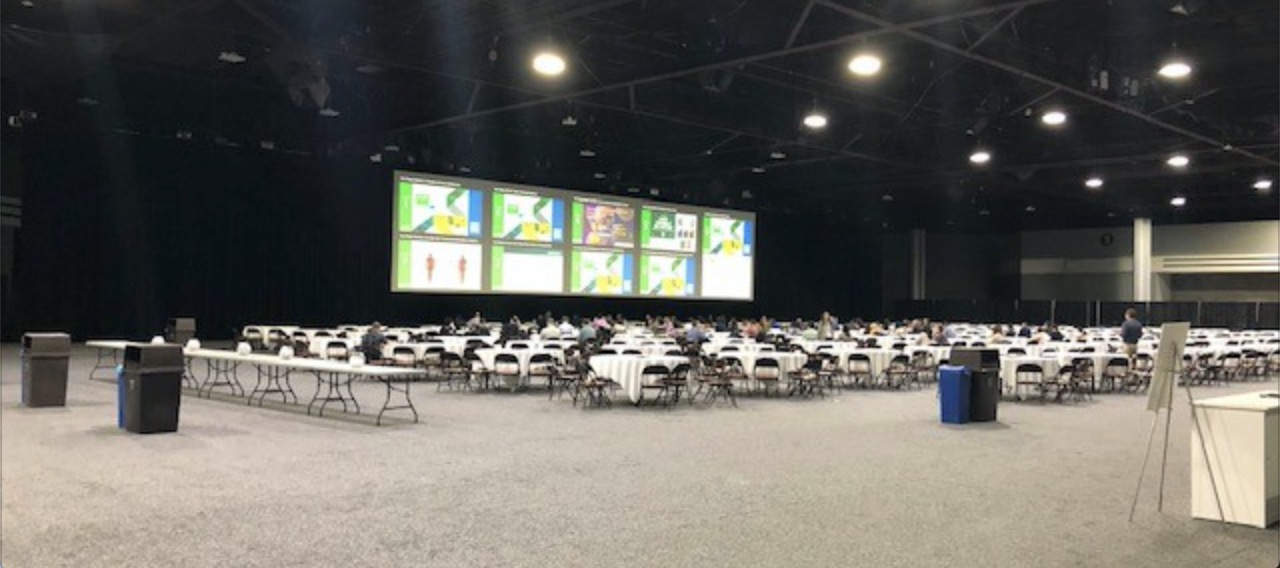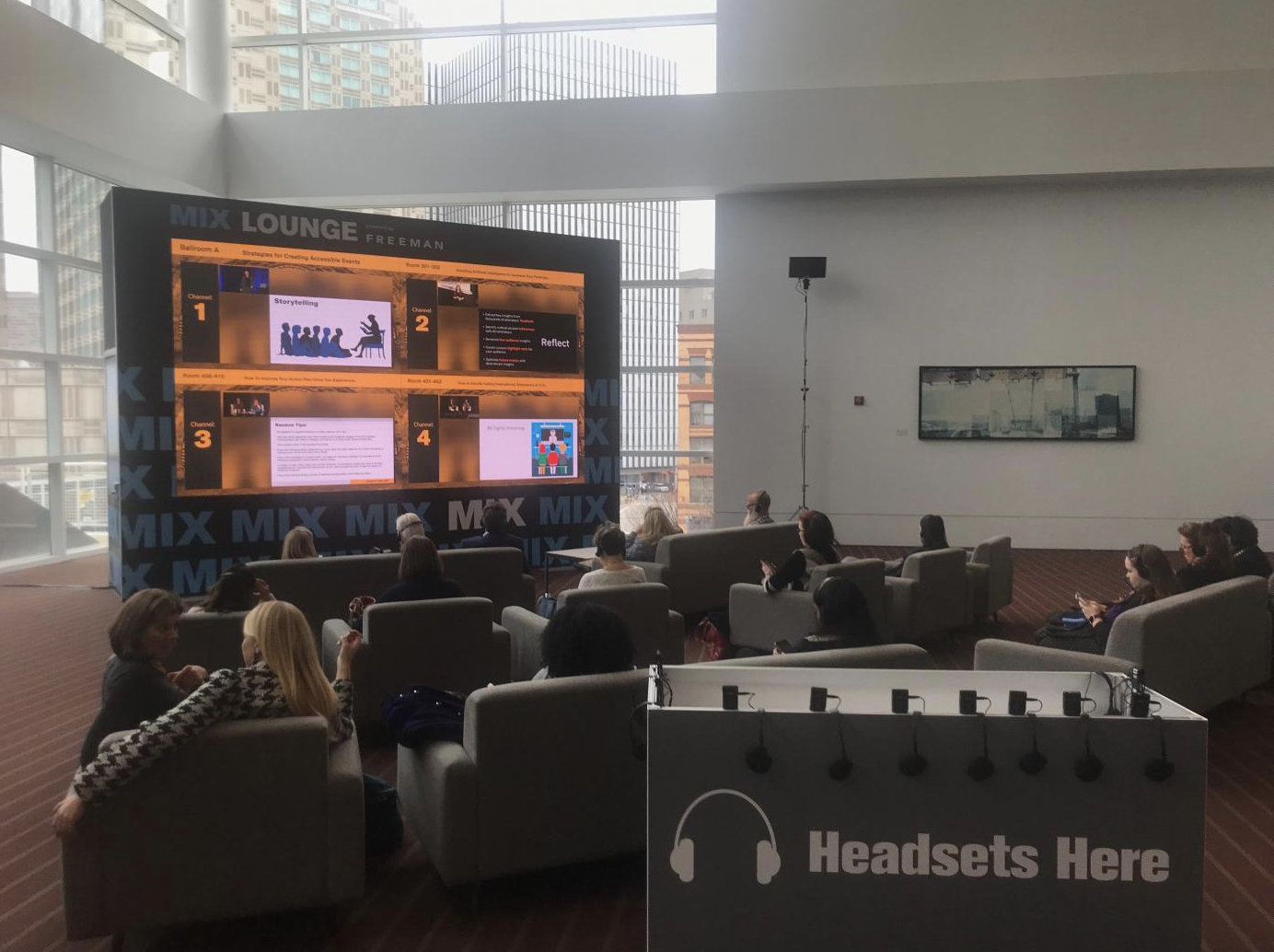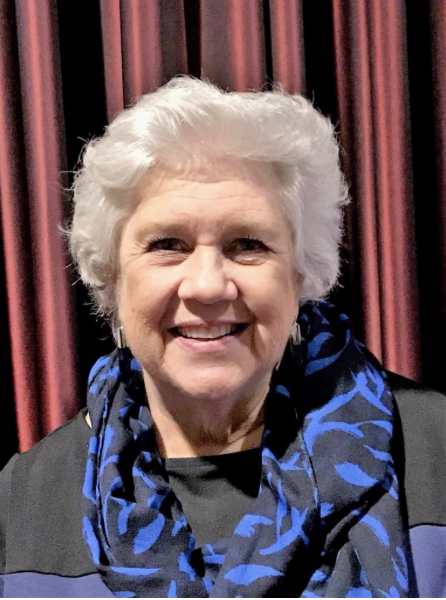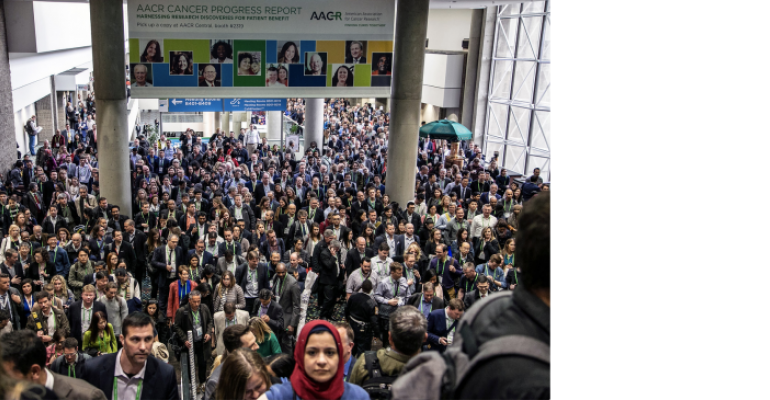Like most meeting professionals, Pamela Ballinger, CMP, senior director of meetings and exhibits for the American Association for Cancer Research, is facing a slew of challenges. First, she had to convert part of AACR’s annual meeting to a virtual event inside of four weeks. The good news: Attendance for part one of the event, held April 27-28, was three times the 23,000 attendees who were expected to gather in San Diego at that time. With part two of the virtual event happening June 22-24, Ballinger and her team are applying feedback from the April meeting to perfect the upcoming experience.
Once that’s done, Ballinger must start revising the logistics of AACR’s 2021 annual meeting, scheduled for Washington, D.C. next spring. Specifically, she must account for sanitary protocols and social-distancing guidelines that will, she hopes, make people comfortable enough to attend. Unfortunately, though, a useful and popular element of the meeting might become a casualty of the coronavirus pandemic; Ballinger is furiously seeking a way to maintain it.
Called AACR Session Central, it’s a large overflow hall that broadcasts all 10 concurrent sessions in each time slot via large screens, with audio devices at each seat for attendees to plug in their own earbuds. In Session Central (photo below), attendees can watch and listen to breakouts that are otherwise filled to capacity, and even change audio channels to hear parts of various sessions in a given time slot.
 Ballinger first saw this delivery concept at the American Society of Hematology’s annual meeting in 2017, plus a far smaller version at the Professional Convention Management Association’s Convening Leaders conference in January 2019 (photo below). “Our meeting keeps getting bigger and we’re dealing more with overflow,” she says. “I had seen some other conventions handle overflow right in the hallway outside a breakout room, with a video monitor and some type of separation from foot traffic. But the sound is not great that way.”
Ballinger first saw this delivery concept at the American Society of Hematology’s annual meeting in 2017, plus a far smaller version at the Professional Convention Management Association’s Convening Leaders conference in January 2019 (photo below). “Our meeting keeps getting bigger and we’re dealing more with overflow,” she says. “I had seen some other conventions handle overflow right in the hallway outside a breakout room, with a video monitor and some type of separation from foot traffic. But the sound is not great that way.”

Instead, Ballinger implemented ASH’s format—employing a spare exhibit hall—for AACR’s 2019 annual meeting in Atlanta. Using a sea of eight-person rounds, Ballinger provided more than 1,000 people at a time with educational opportunities as they remotely surfed the breakout sessions. “They could spend all day in that room if they wanted, and some of them did,” she notes.
As for feedback, “people were thrilled that they could take in so much content in one place; some of them tweeted about it as they were there. Scientists in particular like to bounce around to different talks because they are used to poster sessions. And nobody complained anymore that they were shut out of a session they specifically came to the meeting to attend. Afterwards, our team thought, ‘We are using this forever.’”
A Case-by-Case Evaluation
Then the coronavirus pandemic hit, not only forcing AACR to move the 2020 event online but also changing the space calculations and design of the 2021 meeting. “I’m pretty sure we won’t have the space to set up Session Central as it was in 2019,” Ballinger says. “First, some rooms we’re using for breakouts in Washington can hold 750 people theater style, but if social distancing is still required next April then we’re only going to have about 250 in each room.”
 In that case, there will be no spare large spaces to accommodate Session Central—which would itself require a more spread-out design. “Even if we only get 16,000 attendees next year, we have space challenges,” says Ballinger (photo at right). “We were going to have seating for 1,500 in Session Central, so we have to find some type of alternative.” One possibility: broadcasting all breakouts into guest rooms at hotels within the convention’s room block. Another possibility is to have much smaller Session Central areas tucked into prefunction and other informal gathering areas, though the cost for video monitors would go up considerably.
In that case, there will be no spare large spaces to accommodate Session Central—which would itself require a more spread-out design. “Even if we only get 16,000 attendees next year, we have space challenges,” says Ballinger (photo at right). “We were going to have seating for 1,500 in Session Central, so we have to find some type of alternative.” One possibility: broadcasting all breakouts into guest rooms at hotels within the convention’s room block. Another possibility is to have much smaller Session Central areas tucked into prefunction and other informal gathering areas, though the cost for video monitors would go up considerably.
Even though Session Central might not work for AACR next year, Ballinger notes that “for a smaller meeting, it could be a good way to maintain social distancing,” either by spreading out seats in one big room or by having smaller areas in multiple spots around the facility. Such areas would also result in attendees moving around the venue less than they normally would, reducing the potential for spreading infection while maintaining the unique benefit of in-person events: idea sharing and networking.
One other complication Ballinger faces is a reduced number of poster sessions for the researchers and doctors attending AACR. “We typically have 1,500 posters on boards, and I have no idea what to do to accommodate those. Some medical meetings are going to 15-foot aisles versus 12-foot aisles as well as one-way traffic flows, but that means fewer poster presentations. I’m hoping the social-distancing guidelines will be less strict by next spring; maybe a treatment or vaccine can allow that to happen.”
In this unprecedented environment for meetings, there is at least one thing that Ballinger knows for sure: “It is amazing to hear all the creative ideas that people are throwing out in a tough situation. It is so interesting and inspiring.”





